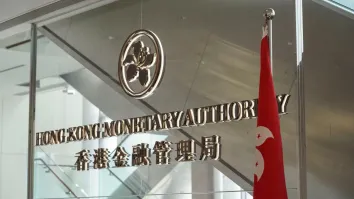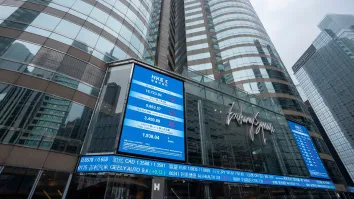
Online-to-offline model gains ground in Hong Kong
The extended operating hours that the internet allows has attracted merchants towards selling online.
Retailers in Hong Kong have been facing a steep fall in demand, with retail sales falling as steeply as 44% YoY in February, according to data from the city’s Census and Statistics Department. This has driven them to turn to online avenues to get by. In the case of the food and beverage segment, nearly half or 46% of consumers in the city are looking to eat at home more often, a survey by Nielsen revealed.
“The shifts away from out-of-home dining to at-home food delivery, takeaways and cooking during the COVID-19 period are locally nuanced by traditional consumption habits but also by the different quarantine and shutdown measures by market. For example, the Japanese have hardly increased ordering food delivery, whilst Thailand has leaned heavily on this channel. Hong Kong consumers have embraced food delivery and light cooking,” commented Andrea Borelli, Nielsen Hong Kong and Macau’s managing director.
As retailers began experimenting with online avenues to tap into this demand, the online-to-offline (O2O) model has been emerging amongst businesses.
For instance, Chow Tai Fook Jewellery Group rolled out an O2O sales channel called “CloudSales 365”, which was built on WeChat Work for its frontline and back office staff in Mainland China to promote and sell products to their families, friends and customers through their social media networks. They have also launched a self-developed O2O tool in Hong Kong and Macau earlier in 2020.
The company shared that these O2O tools helped them leverage the social presence in e-shopping and connect with their customers effectively despite business disruption. “We found that O2O sales channels can lead to higher customer trust through private domain engagement. During February to April 2020, our CloudSales 365 generated higher average selling price, higher non-gold product mix and higher conversion than our eShop,” a spokesperson from Chow Tai Fook told Hong Kong Business.
They shared that the company has been stepping up their O2O integration efforts, aiming to enhance customers’ experience. “For instance, we leverage the Group’s physical stores to deliver online product orders to customers located nearby, so as to shorten customer’s waiting time,” they said.
A white paper by e-commerce platform Shopline reflects this as a trend, revealing that over half of Hong Kong merchants on the platform already have physical stores, whilst over a fifth or 21.6% are planning to set up one in the future. Similarly, 20% of its merchants are planning to focus on O2O as part of their future plans in the long term, such as opening pop-up stores.
“Traditionally, visiting physical retail outlets in the city's shopping malls has been a very popular pastime. But since summer of last year, political turmoil in the city acted as a big push for retailers to start experimenting with O2O,” Shopline’s general manager Plato Wai said.
Whilst brick-and-mortar shops would typically close at nighttime, what's driving merchants to consider O2O is the extended operating hours to sell and operate online. Nearly four in five or 78.3% of the merchants felt that being open all day can give them a competitive edge.
To tide over the current uncertainties in the market, merchants have been opting for multiple channels. One in five or 20% of the merchants are selling on Facebook, and a few others are selling on other platforms. For their future marketing plans, 90% plan to use social channels for marketing, followed by SEO (51.6%).
Growing online
In general, one strategy that has been key for local retailers in order to cope with the changes in consumer demand driven by the pandemic is the shift towards online sales, commented Euromonitor international’s senior analyst Simon Haven.
“Although not all retailers have the necessary infrastructure to make a total shift toward online sales, those that have been able are faring better than others,” Haven said.
However, the crisis has highlighted that many retailers have not yet been well-equipped to venture into the e-commerce era, he added, citing long queuing times, websites that have issues handling the increased traffic, and products quickly going out of stock experienced by the city’s stores.
Further, compared to Europe, the US and China, the online shopping market in Hong Kong is still considered to be relatively small. Wai cited the high density of shopping malls and advanced transport connectivity in the city, which enables easy access to physical shops, as one of the biggest challenges hindering the development of Hong Kong’s e-commerce market.
According to a report from Euromonitor International, the proximity of the city’s stores, mostly located within walking distance in densely urbanised neighbourhoods, made physical shopping extremely convenient, making retailers reluctant to invest heavily in developing their online offering. Further, several newcomers have attempted to penetrate the e-commerce landscape, but few have managed to sustain a profitable business model over an extended period.
“Since the Hong Kong population is so resistant to the global rise of e-commerce, a tailor-made strategy that caters to their specific concerns and needs is vital for the success,” the report stated.
Haven expects Hong Kong to likely remain a "brick-and-mortar shopping paradise" for the foreseeable future, and Euromonitor is not expecting any significant shift toward online sales in the city for the next 6 to 12 months. “The next 12 months are expected to remain challenging for the industry as a whole, and times of crisis are not generally seen as favorable for major investments and change in strategic direction for companies,” he said.
Still, merchants are expected to go from offline to online in the longer term. “Over the next two to three years, as the industry recovers, there will be a growing incentive to shift toward online and become less reliant on physical traffic in-store,” Haven said.
On top of the push factor caused by the pandemic, the cost of expanding stores physically might also encourage further digital push for the retailers. “In Hong Kong, opening a physical shop is costly in terms of rent and labor costs, whilst the cost of operating an online store is much lower,” Wai noted.
On the other hand, the city’s revenue from e-commerce is tipped to grow at an annual rate of 6.8% from 2020 to 2024, which would result in a market volume of $7.16b by 2024. “With customers no longer venturing out for shopping and food, e-payments and last mile delivery in the city has never been more important. Customers have surely become more comfortable and familiar with e-commerce,” Wai said.



















 Advertise
Advertise






